Stop Making These 14 Facebook Ad Mistakes In 2017
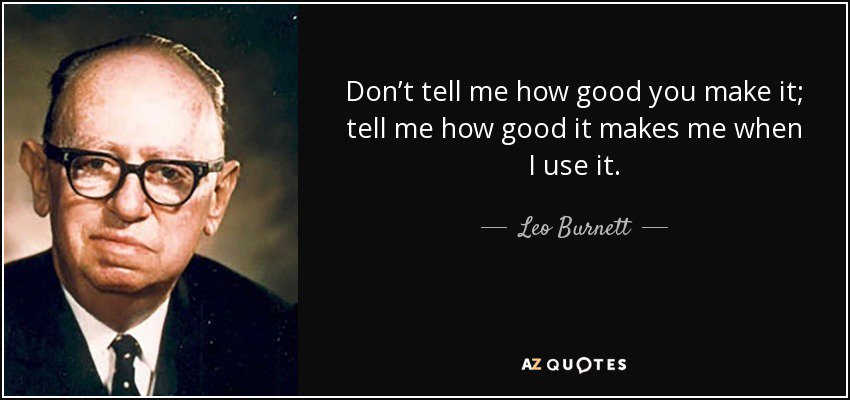
Facebook advertising is growing and doesn’t seem to be slowing down anytime soon. In Q3, Kenshoo reported a 45% YoY increase in spending while Merkle reported a 63% YoY increase in client spend. Even though advertisers keep pumping money into Facebook ads, I still account managers making the same mistakes. These common mistakes can lead to a decrease in overall campaign performance, inefficient ad spend, no creative learnings, bad targeting, wrong messaging and poor customer experience.
In my role, I’m exposed to a lot of Facebook campaigns with objectives ranging from eCommerce to lead gen to subscriptions to app installs to branding/awareness. After reviewing all these ad accounts, I’ve boiled it down to the top 14 Facebook ad mistakes advertisers should stop making in 2017.
Top 7 Facebook Ads Level Mistakes
#1 – Only Running One Ad
This is a very common mistake that I’ve seen in a lot of ad sets. There are times where we’ve set up single ad sets as part of a strategic creative cycle. However, I’m not talking about those instances. I’m referring to when the advertiser forgot to create other ads or didn’t realize they only had one ad running.
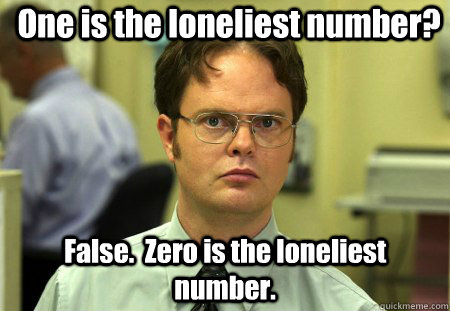
Either way, by only running one ad you’re not taking advantage of creative testing. You’re missing out on the opportunity to quickly glean valuable audience insights from your Facebook ads.
In 2017, let’s turn this around and make sure we’re running at least two ads in every ad set. Bonus points for having a rotation plan!
#2 – Only Running Old Ads
This is in relation to mistake #1 and mainly due to insufficient creative direction coupled with a lack of understanding of the Facebook ads auction. We’ve seen accounts where the same ad has been running for months without any updates or modifications. And the client wonders why performance is declining. I get it because I’ve seen ads take off and been afraid to make any changes that might screw up performance.
Facebook ads are a completely different beast than other channels. They require their own creative testing process to overcome ad fatigue and should be laid out as a part of a cohesive creative strategy.
In 2017, let’s update those old ads and experiment with new ads to learn as much as we can about what’s working (and what’s not). Bonus points for including Dark Posts!
#3 – Audience Message Alignment
This is a common yet complex mistake. It’s difficult to get the right message in front of the right audience at the right time. Yet, as marketers, personalization is something we should strive to achieve in all our advertising, especially with Facebook ads. Too many times I’ve witnessed account managers trying to use the same ad copy across all channels and then not see results. Generic ad copy will get you nowhere in 2017. It’s time to prioritize crafting personalized messages to your target audience and how you can best reach them.
The biggest problem I see with messaging is advertisers coming in with a hard sale to cold audiences. It’s like walking up to a strange and asking them on a date. Your chances of success are very low. You have to introduce your brand/product first before asking for the sale.
In 2017, let’s personalize our messaging to where an audience is in the funnel, and heed the advice of advertising legend Leo Burnett, “Don’t tell me how good you make it; tell me how good it makes me when I use it.”

#4 – Not Testing Different Ad Types
Are your campaigns only running static images? Well, it’s time to test different ad types like videos, carousels, slideshows, Offer Claims, Lead Gen ads, Store Visits, Canvas, and dynamic product ads. Facebook is becoming extremely video heavy is predicted to become all video within the next five years. But don’t let this deter you from testing new ads.
Facebook offers multiple ad types and marketers should be testing more than just static images to better understand which type achieves the best performance.
In 2017 don’t limit your campaigns to one ad type. Instead, let’s work on testing a variety of ad types and exploring creative ways to get your message out to your audience. You just may be surprised how well carousels or slideshows resonate with your audience. Bonus points for interactive Canvas ads.
#5 – Poor Landing Page Congruency
Have you ever clicked on a pretty ad only to arrive on a poorly designed landing page? It’s like what just happened here. Or even worse, clicking on a product ad that takes you to a completely different product. This is called poor landing page congruency. The webpage doesn’t match the expectations set up in the ad. Sometimes account managers are just working with what they have from the client. Other times, it’s account managers making mistakes and sending traffic to the wrong landing pages.
Another scenario to consider is your mobile site performance. Has this ever happened to you? You click on a link from your mobile News Feed only to have the landing page take forever to load so you click back into Facebook. Well, Facebook is confronting this issue by factoring in mobile site load time into their algorithm.
[bctt tweet=”“40% of consumers abandon a site that takes over 4 seconds to load.” ~ @Kissmetrics” username=”@jdprater”]
In 2017, let’s improve the customer experience and decreasing the risk of site abandonment by ensuring our mobile sites load quicker and our landing pages are congruent to the ad.
#6 – Ad Naming Conventions
Oh, naming conventions. Hanapin’s already written about their benefits here and here, and, honestly, I have a love-hate relationship with them. I love them when they’re easy to understand and make reporting easier. I hate them when they make my life harder with overly complex conventions. In the end, I would rather see a Facebook account utilizing naming conventions across campaigns, ad sets and ads than to have nothing in place at all.
Given the option, I would take Option #2 over Option #1 every time.

In 2017, let’s take the extra few minutes to set up our ads with a proper naming convention that allows for easy reporting and organization across an entire team.
#7 – Not Tracking or Optimizing for Conversions
It’s bizarre when we come across an account that doesn’t have the Facebook Pixel implemented on the website. It’s even weirder when they do and aren’t utilizing it to optimize their campaigns. This is usually more common with new Facebook advertisers, but we’ve seen veterans make this mistake too.
You want to make sure that you have the Facebook Pixel properly placed across your website and then take the next step by creating events. There are ten standard events that you use to optimize and track your campaigns.
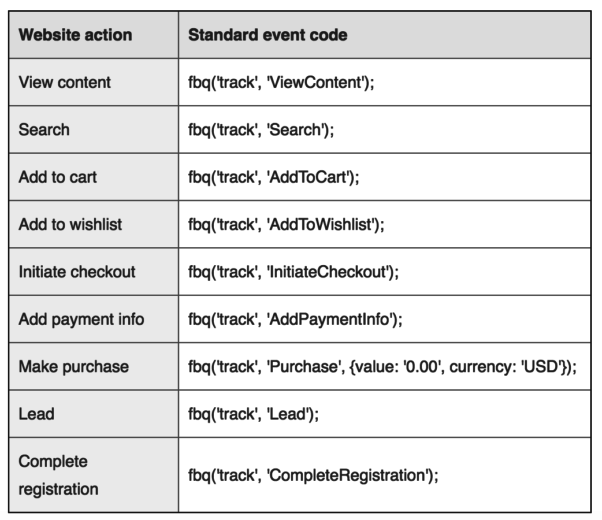
In 2017, work on getting the standard events that make sense to your business place. Not only will they help you optimize your campaigns, they’ll help you better track conversions within Facebook. Keep in mind that in August 2016, Facebook discontinued the “ability to create new conversion tracking pixels (CTPs) and in February 2017 will completely disable the conversion tracking pixel.” Now is the time to get your events implemented.
Top 7 Facebook Ad Set Level Mistakes
Let’s shift gears and focus on Facebook ad sets. Avoiding these mistakes will have a huge impact on your ad performance. Some of these were covered in more detail in our webinar with Facebook called, Breaking Down the Facebook Auction for More Competitive Campaigns.
#8 – Audience Size
Audience size is one of the thorniest mistakes as it’s not as cut and dry. However, there are a few best practices that can be easily be implemented that could help your performance.
First, is your audience too big? I’ve seen ad sets targeting extremely broad audiences and have a potential reach of over 30 million people or 1 in 5 people using Facebook in the United States. Now you might be able to get away with an audience size if you’re a household brand, but let’s be honest, your business probably doesn’t appeal to that many people. And neither will your ad copy. Work on reducing your audience reach to 1-2 million for higher in the funnel targeting or cold audience. This will allow you understand what’s working and hopefully make your ads more relevant to the targeted audience.
Second, your audience is too small. We see this is a lot in remarketing campaigns. You’ll know when you’re audience is too narrow when you see your reach increase and delivery decrease. It means you’re inundating your audience with ads and Facebook is slowing down, because they want to create a quality user experience. If people are seeing the same ads over and over again they’re going to hide your ads, which will hurt your performance. Seek to find a balance between audience size and daily budget to make sure you’re not overwhelming them.
In 2017, work on breaking your broad audience into smaller audiences and for the small audience try to find ways to increase your audience size or reduce your daily budgets. Audience size is tricky, but you should definitely test and find what works for your company.
#9 – Not Excluding Audiences
Advertisers are notorious for not excluding audiences in remarketing campaigns. How many times have you purchased a product and you still ads for that product follow you around? It happens more than we care to admit. Aside from excluding past purchasers from our campaigns, Facebook account managers also need to get better at preventing audience overlap.
We see this all the time with ad sets targeting multiple Lookalike audiences. For example, let’s say you have one ad set targeting a 1% LAL audience and another targeting a 2% LAL audience. In many cases, that’s exactly how they’re set up. However, you should make sure to exclude the 1% LAL audience from your 2% LAL ad set to ensure no overlap. This applies to interests and behavior targeting too.
In 2017, reduce your internal competition between ad sets by excluding audiences.
#10 – Targeting All The Things
This is one of my personal favorites because without third party tools it’s nearly impossible to know what’s working in the Facebook interface. Why target 20 different interests and 15 behaviors and end up with an audience that’s 63 million? In order to understand which targeting option is working you’ll to break those out either into separate ad sets or bundle five or so together. Not only will this provide you more control, it should also lead to improved message alignment in your ads.
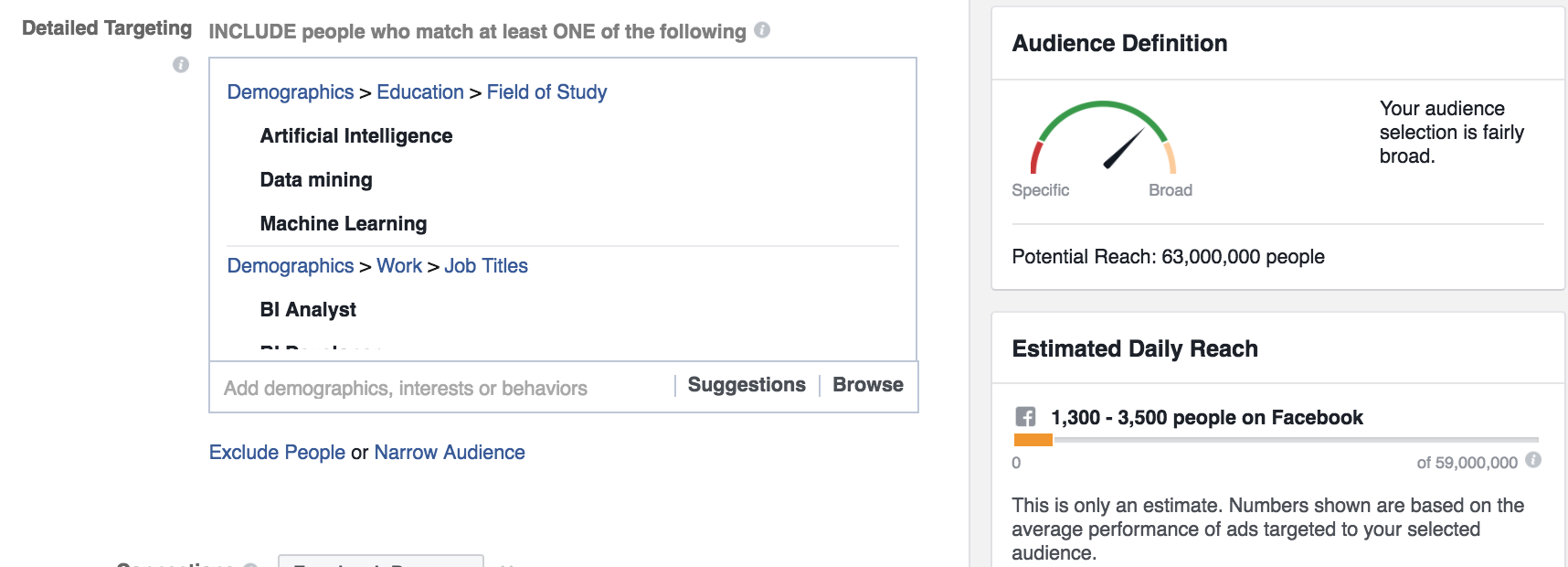
In 2017, let’s hone in our audience and work to understand which interests and behaviors are actually leading to successful campaigns. I’m sure our audience will appreciate it too!
#11 – Not Creating New Lookalike Audiences
We seen excellent results come from Lookalike Audiences. Facebook Lookalike Audiences are a way to reach new people who are likely to be interested in your business because they’re similar to customers you care about. They’re based off your data sources, which means you should create different LAL from different sources as well as create new ones regularly.
One mistake we’ve noticed is stale LALs. The reason you want to create new ones is because they’re audiences are static. They don’t dynamically update like your website custom audiences. So you’ll want to create new ones regularly to ensure your finding those new audiences. UPDATE: Lookalike audiences will automatically update every 3-7 days to reflect changes to your source audience. So if you’re using a dynamic audience to create your LAL then it will also update. Static source audiences will have static LAL audiences. (HT to @JulianReiche).
Another mistake we see is only creating 1% Lookalike audiences. You can create up to a 10% LAL audience that has a reach of 20 million people. Now that’s an extreme example, but you can create 1-2% and 2-3% audiences to test.
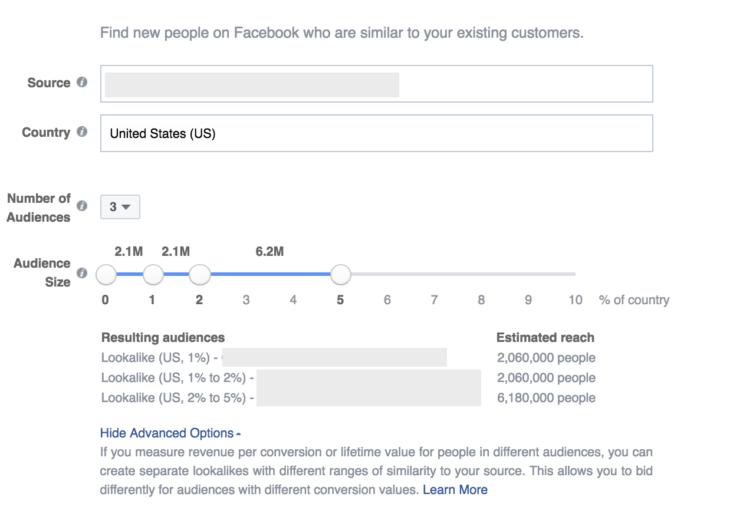
In 2017, avoid these mistakes by creating some fresh LAL audiences and experimenting with different percentages. You may find that a 5% LAL performs extremely well.
#12 – Wrong Budget Size
In order to achieve the results you’re looking for, you’ll need to ensure your budget matches the audience size and objective. Too many times, I’ve seen ad sets with $200 daily budgets trying to reach a 1,500 audience size. It just doesn’t deliver well in the auction and performance will drop because it’s too aggressive.
To ensure smooth and ongoing delivery, your daily ad set budget should at the least be greater than your bid. If your objective is conversions, your ad set budget should be many times greater than your bid. Be aware that splitting your total budget across too many individual ad sets might make it harder for your ads to deliver as much as you intend them to.
Make sure to set your ad delivery to the conversion event that best aligns with your campaign objective, but keep in mind that your ad set should capture 15-25 conversions per week to establish an adequate baseline. If your volume is lower than this, move your optimization event up the funnel to actions like add-to-cart.
- Pro Tip: If under-delivery continues to be an issue, use the default automatic bidding option or increase bids/budgets to be more competitive in manual bidding.
In 2017, optimize ad delivery with the conversion event that best aligns with your campaign objective. And remember, the Facebook auction is set to maximize value, not revenue.
#13 – Selecting The Wrong Objective
What are you trying to accomplish with your campaign? Remember objectives are selected at the campaign level. If your goal is to drive awareness with video ads then you probably don’t want to select link clicks as your objective. Facebook offers 14 different objectives to help you reach your business goals.
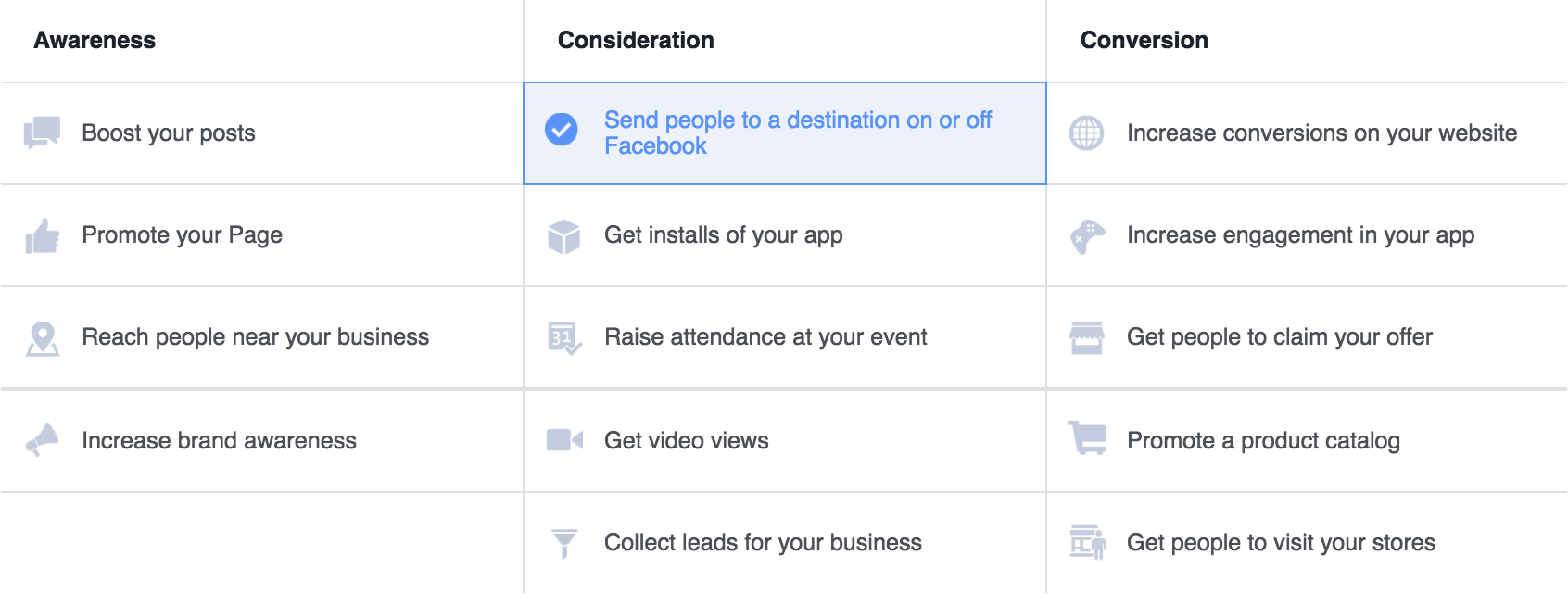
The next common mistake comes after setting the outcome you want to drive with your ad, you have two options for setting your bid: automatic bidding, where our ad auction system will adjust your bid to generate the most desired actions possible within your budget, or manual bidding, where you set the monetary value of your desired outcome.
If you’re using manual bidding, it’s best to start with a bid that represents how much you value each outcome or action you’re optimizing for. For example, if you want website conversions and a conversion is worth $20 to you, bid at least $20. Lower bids may reduce the number of people in your target audience who see your ad.
In 2017, create campaign objective alignment with your desired business outcome. There are multiple options to choose from so make sure selecting the right one and testing the others.
#14 – Ad Placements
The last mistake in this roundup revolves around ad placements. Facebook has changed this option to be set to automatic, which selects all networks by default. This means your ad will run across the Facebook News Feed (mobile and desktop), the right-hand column, Instagram, and Facebook Audience Network. Facebook claims this is another way to help increase your chances of having steady delivery by reaching each user where he or she will be most impacted. I see the option as the easy button.

However, we say don’t be shy in breaking them out into separate ad sets to manage placement performance. Of course, analyze the placement data to understand when this makes sense, but for most accounts, we’ve seen this is usually the case.
The reason being every placement performs and costs differently, and I’m not ready to trust Facebook to optimize my ads across all those networks. I’m happy to start with automatic placements to get the learnings, but I’ll probably end up turning off certain placements due to low performance.
Conclusion
With 2017 around the corner, let’s make our Facebook New Year’s Resolutions to avoid making these 14 mistakes. Especially since most of them are easily remedied with a coherent creative strategy and knowing where you want to take the account.
What are some of the common mistakes you see in accounts? Share your thoughts with us on Twitter, @jdprater and @ppchero.


